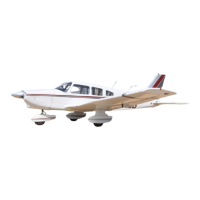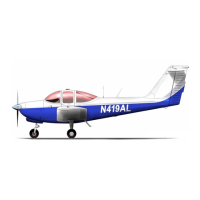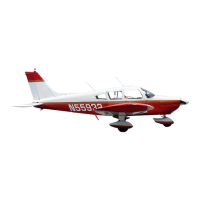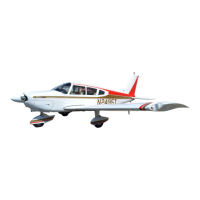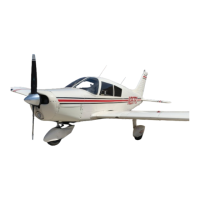THE NEW PIPER AIRCRAFT, INC.
PA-32-301FT / 301XTC
MAINTENANCE MANUAL
PAGE 17
Jun 1/03
4D21
51-00-00
C. Corrosion Inspections
NOTE: Some areas of the airplane have been treated with a corrosion inhibiting compound which
requires re-treatment at 7 year intervals. See Fuel Tank/Wing Spar Corrosion Inspection,
28-10-00.
Corrosion should be inspected for at every inspection. In trouble areas, the inspection frequency
should be increased.
In addition to routine inspections:
(1) Aircraft operating around a marine environment should be given special checks on a weekly
basis.
(2) Aircraft operating in a semi-acid condition should be inspected monthly. A semi-acid condition
is likely to occur in industrialized areas where sulfur bearing particles in dust, smoke and smog
attack painted surfaces.
(3) Inspections for corrosion should be performed by personnel familiar with corrosive problems
and their remedies.
(a) Daily and preflight inspections should include the engine frontal areas, all intake vents,
engine compartments, gaps, seams, and faying surfaces in the exterior skins, wheel and
wheel well areas, battery compartment, fuel cell and all other drains, and any bilge areas
not requiring extensive removal of inspection access covers.
(b) Detailed inspection should include the above referenced areas along with areas requiring
removal of screw attached inspection plates and panels to thoroughly inspect the internal
cavities of the aircraft.
(4) During inspection remember that paint tends to hide corrosion in its initial stages. However, the
results of corrosion can sometimes be seen as blisters, flakes, chips and other irregularities in
the paint.
D. Corrosion Removal and Control
CA
UTION: REMOVAL OF “SEVERE CORROSION” MAY BE CONSIDERED A MAJOR REPAIR.
ANY REPAIR OF THIS TYPE MUST BE APPROVED BY THE FAA BEFORE
RETURNING THE AIRPLANE TO SERVICE.
Corrosion cannot be prevented or eliminated on aircraft; it can only be reduced to an acceptable
level by proper control methods.
All corrosion products must be removed prior to refinishing. If they are not removed, corrosion will
begin again, even though the affected area is refinished.
(1) Before beginning any rework:
(a) Position the airplane in a wash rack or provide some type of washing apparatus for rapid
rinsing of all surfaces.
(b) Connect a static ground line to the airplane.
(c) Remove the airplane battery if required.
(d) Protect the pitot-static ports, engine openings, airscoops, louvers, wheels, tires and other
portions of the airplane from moisture and chemical brightening agents.
(e) Protect the surfaces next to the rework areas from chemical paint strippers, corrosion
removal agents and surface treatment materials.
